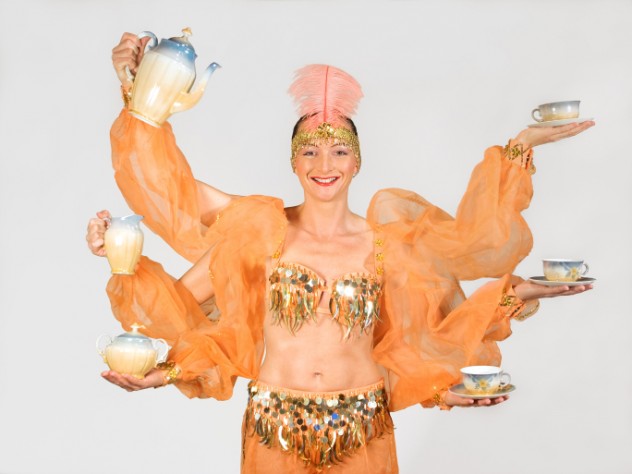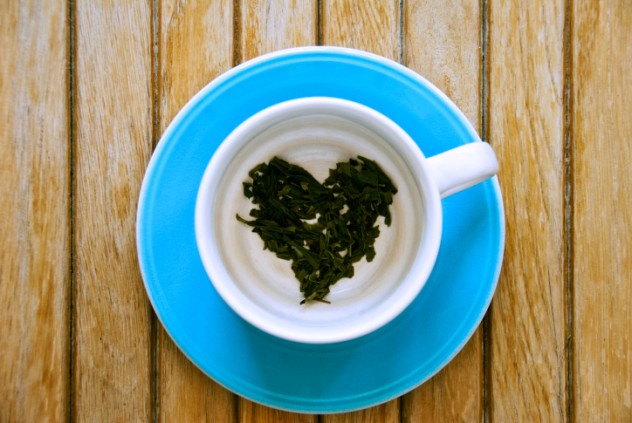 Movies and TV
Movies and TV  Movies and TV
Movies and TV  History
History 10 Things You Never Knew About Presidential First Ladies
 Movies and TV
Movies and TV 10 Zombie Movies That Will Actually Terrify You
 Humans
Humans 10 Times Scientists Were Absolutely Sure… and Absolutely Wrong
 Our World
Our World 10 Pivotal Moments for Life on Earth
 Movies and TV
Movies and TV 10 Most Realistic Medical TV Shows of All Time
 Creepy
Creepy 10 Eerie & Mysterious Ghosts of the Pacific Coast
 Weird Stuff
Weird Stuff 10 Typos That Accidentally Changed History
 History
History 10 Times Trickery Won Battles
 Technology
Technology 10 Awesome Upgrades to Common Household Items
 Movies and TV
Movies and TV 10 Movie Flops That Found Their Way to Cult Classic Status
 History
History 10 Things You Never Knew About Presidential First Ladies
 Movies and TV
Movies and TV 10 Zombie Movies That Will Actually Terrify You
Who's Behind Listverse?

Jamie Frater
Head Editor
Jamie founded Listverse due to an insatiable desire to share fascinating, obscure, and bizarre facts. He has been a guest speaker on numerous national radio and television stations and is a five time published author.
More About Us Humans
Humans 10 Times Scientists Were Absolutely Sure… and Absolutely Wrong
 Our World
Our World 10 Pivotal Moments for Life on Earth
 Movies and TV
Movies and TV 10 Most Realistic Medical TV Shows of All Time
 Creepy
Creepy 10 Eerie & Mysterious Ghosts of the Pacific Coast
 Weird Stuff
Weird Stuff 10 Typos That Accidentally Changed History
 History
History 10 Times Trickery Won Battles
 Technology
Technology 10 Awesome Upgrades to Common Household Items
10 Absorbing Facts About Tea
Considering that tea is one of the most popular drinks in the world, it is quite likely that many of you enjoy tea on a regular basis. In many countries, it is a part of daily rituals or a mark of status and luxury. However, tea started out as much more than just an enjoyable drink. While no one is sure of its origins, some believe that it started out as a health tonic in ancient China and has slowly spread around the world since. The world of tea is absolutely fascinating, so put on the kettle and join us as we explore this wonderful beverage.
10 Tisanes

Much of the time, when people say they are drinking tea, they are actually drinking something called a tisane. You see, for something to be considered tea, it needs to actually contain the leaves of the plant Camellia sinensis, otherwise known as the tea plant. However, many of the concoctions you find in stores are simply a combination of herbs meant for all sorts of different purposes and don’t contain any tea leaves at all.
Back in the day, people had already realized that many different herbs had wonderful healing properties, and the main point of these herbal infusions was to improve health. Chamomile, for instance, can help you sleep, and ginger is often used to help those with an upset stomach. Since tisanes do not include tea leaves, they are naturally caffeine-free, so you can drink them at any time of the day.
9 Japanese Tea Ceremony

The tea ceremony is an important part of Japanese culture and involves the consumption of a delicious powdered green tea known as Matcha. However, while the ceremony seems to center on the tea, its more about the social ritual than anything else. You see, the tea ceremony originally began as an art form practiced by the elite of Japanese society as a way to bond socially and further their status. Every action is focused on how the guest would see things.
The ceremony usually involves only four to five people at a time. The tea is usually served with sweet snacks to complement the Matcha green tea. While the ceremony is considered very important in Japanese culture, it takes a very long time to achieve full mastery.
8 Decaffeinating Tea

Sometimes when you want a cup of tea, you really don’t want the caffeine, but all you have around is caffeinated black or green tea. Many people will tell you that there is a simple solution—decaffeinate it yourself. Some people say that this is as easy as steeping your tea for about 30 seconds, throwing out the first wash of tea, and then re-brewing. As it turns out, it isn’t quite that easy, although it is still possible to decaffeinate your own tea.
Researchers took the time to study how long it takes to remove the caffeine from the teabag. They found that you will need to brew your first batch for a good 10 minutes or so if you want to get rid of about 90 percent of the caffeine. While this does mean you will have to wait longer, most tea does just fine being brewed multiple times.
7 Soy Lecithin

Celestial Seasonings—one of the most well-known tea brands—has been under fire recently for including soy lecithin in many of their products. Of course, the company maintains that they use non-GMO soy and only for the purpose of blending the ingredients better. This is problematic for those allergic to soy, but for the rest of us, it actually isn’t that bad.
Lecithin itself has been looked at in many different studies, and while some results are inconclusive, it is believed to actually have beneficial effects for your health. Lecithin has been found in small studies to be effective in combating ulcerative colitis, also known as inflammatory bowel disease. It has been suggested as a possible treatment for a host of other problems. While not enough studies have been done to confirm its usefulness, some have suggested using it to treat Alzheimer’s, Parkinson’s, and even bipolar disorder.
6 L-Theanine

The caffeine in tea can have quite a stimulating effect, but it usually feels much mellower than drinking coffee. The reason for this is that tea also contains something called L-theanine that has a very interesting effect on the brain.
Many studies have been done, and they all show L-theanine as having beneficial effects on the brain. It is prized for its ability to help induce meditative states, because it can help you relax without actually making you want to sleep. It has been found in studies to improve your memory, and even makes you more aware of your surroundings. It’s also been found to be capable of decreasing anxiety and good for dealing with stress in general.
5 Masala Chai

In the United States, there is a drink borrowed from Indian culture that we call a chai tea latte. This beverage is made by mixing black tea with spices such as cardamom, cinnamon, ginger, cloves, star anise, black pepper, and vanilla. The drink is usually served with milk, sweetened with honey, and drunk hot or cold.
However, you might get some pretty funny looks if you order a chai tea in most Asian countries. In India, Russia, and many other places, “chai” actually just means “tea.” You would be literally ordering a “tea tea,” which sounds pretty silly if you say it that way in English. If you want to order the drink properly in India, you would ask for a masala chai, which translates to “spiced tea.”
4 Pickled Tea

Most people think of tea as only something that you drink, and in most parts of the world, that is the case. In Burma, however, they have long had a completely different way to enjoy tea. The Burmese have a pickled tea that they call lephet. To make lephet, tea leaves are first softened, then allowed to cool, rolled tightly, and placed underground to age.
Lephet is considered a delicacy in Burma and is all but mandatory for important social occasions. The Burmese usually serve it on a tray with the pickled tea in the middle, surrounded by several other garnishes. These can include shrimp, sesame seeds, garlic, peanuts, and dried peas. While the Burmese may be the only culture that places importance on eating tea as a food, they still consume it as a drink on a regular basis.
3 Polluted Tea

Studies have been performed on tea to ensure that nothing dangerous is caught in the tea leaves, and the results have hardly been reassuring. A study in Brazil of various teas found that green and black tea had a high amount of aluminum and fluoride. Now according to the study the amount of aluminum is fairly safe—however, the amount of fluoride is actually high enough that it could contribute to dental fluorosis, especially in children. Of course, to have any risk of that, a child would need to drink an inordinate amount of tea, so British children should be careful (and their teeth aren’t too well off to begin with).
These compounds soak into the tea through the soil and are most common in brick tea, which is often low in quality. Some researchers have suggested that the aluminum content is a concern and could contribute to Alzheimer’s disease. Finding solutions to minimize the amount of these compounds in tea is clearly very important.
2 Tasseomancy

Tea may be a popular drink, but many cultures have come up with other uses for this plant. Of the many uses for tea, one of the strangest is a form of divination called tasseomancy. This form of divination can trace its roots all the way back to ancient China, although it was likely spread more by gypsies than anyone else. Since the tools required for tasseomancy were hardly considered suspicious, it was quite a popular form of divination during the days when people were hunted down for practicing witchcraft.
To perform a reading, you need to prepare your tea using loose leaves and allow the person receiving the reading to drink it. Once the tea has been finished, the reader will swirl what is left three times in a counter-clockwise direction—ensuring that the handle is facing them, as direction is important—and then begin interpreting the patterns to explain your future.
1 Health Considerations

Tea was originally a health tonic when it was first used, so it is perhaps unsurprising that many researchers focus studies on the possible health effects of tea. Unfortunately, the results have been constantly contradictory.
One study that tracked several thousand men over the course of 37 years found that those who drank a large amount of tea daily were more likely to develop prostate cancer. However, other studies have found almost exactly the opposite. A double-blind study, using a control group for accuracy, tested green tea catechins on men who had a precursor to prostate cancer. The study found that the green tea catechins actually had a beneficial effect. However, further studies on the topic have found no effect whatsoever. Much more research is necessary before we can truly understand the health implications of tea.
You can follow Gregory Myers on Twitter.








